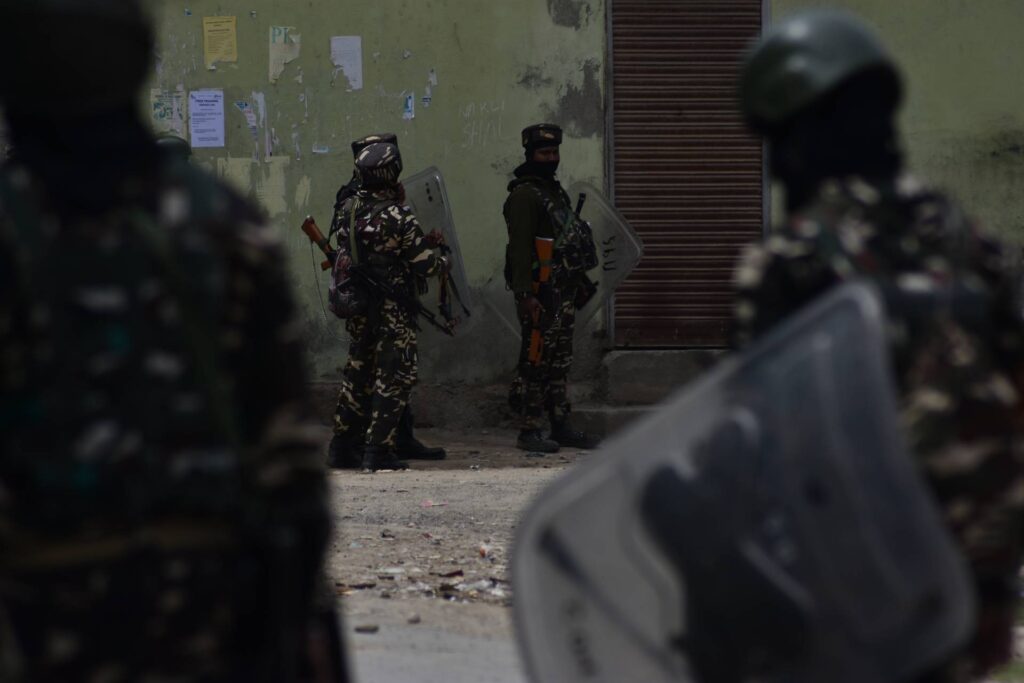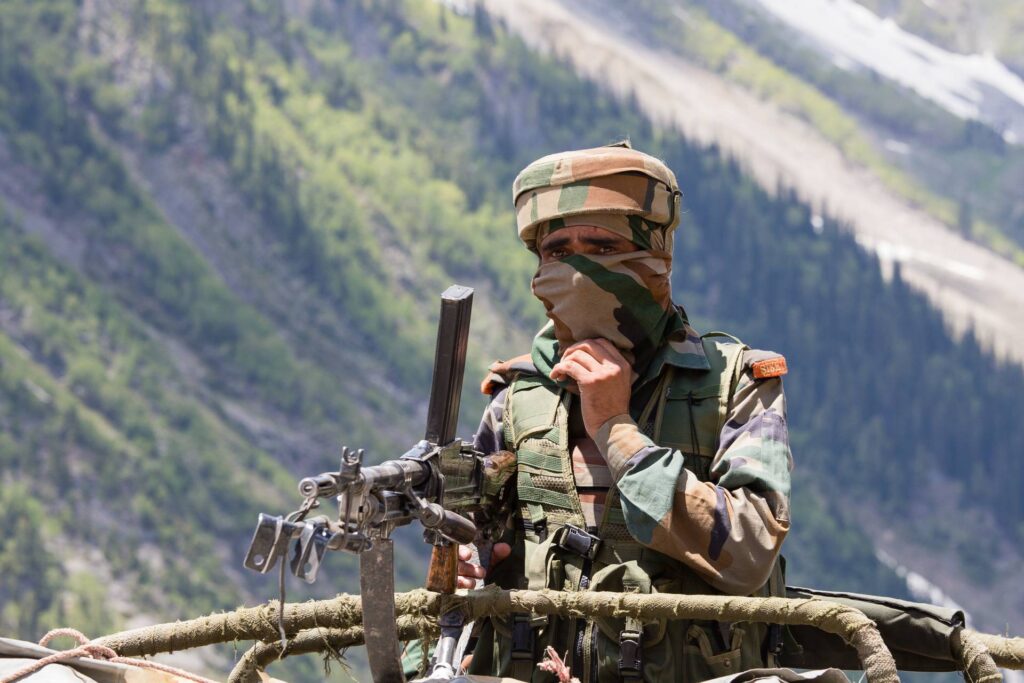The year is 1998. Sunday, January 25, 1998, to be precise. Super Bowl XXXII is in full swing. The Denver Broncos defeat the defending champions, the Green Bay Packers, by a score of 31–24. Bill Clinton is the president of the USA, and the following day he will discuss the Monica Lewinsky story publicly. India celebrates its Republic Day on January 26 as well. Both countries experience a festive weekend.
But not everyone in India enjoys it. Approximately 800 kilometers from the Indian capital of New Delhi, in a hamlet in the Ganderbal district of Jammu and Kashmir (or simply Kashmir), a gruesome event of horrific proportions takes place. Wandhama village is home to roughly 200 farmers, with about two dozen being Kashmiri Pandits — a minority community living in a few homes surrounded by Muslim neighbors. On this day, foreign mujahideen and domestic terrorists enter the village. These radicals pluck Kashmiri Pandits, assemble them in a line, and shoot them dead one by one. The deceased include four children, nine women and ten men. The sole survivor, a boy, escapes death because other victims fall over him and the killers assume the boy is dead. In the hamlet of Wandhama, the centuries-old Kashmiri Pandit community is wiped out in minutes.
Ghastly as the Wandhama tragedy is, an even more heinous crime took place a year earlier. On June 15, 1997, in the Ramban district, about 130 kilometers south of the state capital of Srinagar, terrorists stopped a bus carrying passengers from Ramban to the nearby village of Gool. Four terrorists entered the bus and asked Hindus to step out of the bus. Six Hindu passengers did so. The mujahideen then shot three of them. All three victims were Kashmiri Pandits who were teachers in the Gool Higher Secondary School. The three Hindus spared were not Pandits.
The Wandhama tragedy of 1998 was followed by another massacre. On March 23, 2003, mujahideen members massacred all Kashmiri Pandits in Nadimarg village, located in Kashmir’s Pulwama district. Of the 24 killed, 11 each were men and women while two were young boys.
An little-known story about a great tragedy
Western, especially American, media tends to forget one key fact about Kashmir. Fanatical Islamic mujahideen terrorists perpetrated genocide of Kashmiri Pandits. This fact was even forgotten by Indian media until the film The Kashmir Files came out in 2022.
Only a year ago did Indian moviegoers grasp the horrors of the genocide. Behind this brutal ethnic cleansing, lies a tale of betrayal and deceit. The dominant groups in the country — Indian political leaders, Indian media, Indian non-governmental organizations (NGOs) — did their best to hide this genocide. Their cover-up efforts were effective. To this day, even many Indians question whether Kashmiri Pandits faced genocide. Wikipedia erroneously still defines this genocide as an exodus.
Even today, Kashmiri Pandit massacres of the 1990s remain unsolved. Importantly, the Indian state in the 1990s was well aware of what was going on. On June 10, 1999, the National Human Rights Commission (NHRC) concluded that the Kashmiri Pandit experience had been “akin to genocide.”
Only in the last couple of years — 30 years after the Kashmiri Pandit genocide — has the Indian government finally started investigations into the killings of only a few victims. Even talk of genocide ignores the extent of the tragedy that Kashmiri Pandits experienced. They experienced their own version of Kristallnacht (the “Night of Broken Glass”) that Jews experienced on November 9, 1938, in Berlin. The Kashmiri Pandit Kristallnacht occurred in Anantnag district of Kashmir on February 20, 1986. Their homes, shops, temples and other property were desecrated or burned in the district.
The government shamefully failed to act in Anantnag. After the Kashmiri Pandit Kristallnacht, there was no arrest, no investigation and no trial. Murderers, arsonists and ethnic cleansers got away scot-free. The morale of fanatical Islamists shot up. They now rightly assumed that Kashmiri Pandits were on the menu.
In 1986, the Congress Party was in power in New Delhi. In 1989, a ragtag opposition coalition took charge. A certain Kashmiri politician took charge as home minister, the top job in the cabinet that oversees internal national security. Ironically, Mufti Mohammad Sayeed — the new home minister from Kashmir — was the rabble-rousing politician who instigated the Kashmiri Pandit Kristallnacht in Anantnag.
Sayeed belongs to the elite Kashmiri Muslim ruling class. Supposedly, he is a direct descendant of Muhammad, the prophet and founder of Islam. This ruling Muslim elite first systematically persecuted Kashmiri Pandits, then subjected them to a brutal campaign of violence, intimidation and terror, and then ethnically cleansed Kashmir of its original community: the Kashmiri Pandits. New Delhi appeased the Kashmiri Muslim elite, gave them a clean chit and turned a Nelson’s eye to the genocide of the hapless Kashmiri Pandits. Justice has not only been delayed but denied to these tragic victims by successive Indian governments.
Murderers got away scot-free, appeasement did not work
Sayeed and other members of the Kashmiri Muslim elite got away with murder. National politicians in New Delhi pursued an appeasement policy with this murderous elite. The Congress Party and the coalition that succeeded them wanted to retain support of the Kashmiri elite to keep control of Kashmir. They also thought this elite would be useful for getting the Muslim vote in the rest of the country. So, they colluded with national media to keep the genocide of Kashmiri Pandits out of the press.
During this period, Pakistan’s Inter-Services Intelligence (ISI) was in the ascendant. They were training jihadis to foment trouble in Kashmir. Since 1947, Pakistan has wanted control of Kashmir. As a Muslim-majority region, Pakistan sees Kashmir as a natural part of the nation. Kashmir is part of Pakistan’s foundational myth. Hence, the genocide of Kashmir Pandits is part of the grand plan of Islamizing this region and reclaiming it for the pure nation of Islam.
Before the genocide began, Kashmir had 350,000 Kashmiri Pandits. By 2016, this number had declined to 2,764. Note that the genocide of Kashmiri Pandits has been a long, drawn-out affair. It began as early as the 14th century when Islam first came to Kashmir. The difference between earlier waves of violence and the one in the 1990s is the fact that this genocide occurred in the sovereign territory of secular, democratic and multiethnic India.
Two questions arise.
Was the 1990s genocide of Kashmiri Pandits inevitable? Yes, given the stupidity of national politicians and the weakness of Indian democracy.
Was this genocide avoidable? Yes, if leaders had acted bravely and wisely against fanatical Islamists, a messianic Pakistan and a diabolical, duplicitous local Muslim elite.
[Lee Thompson-Kolar edited this piece.]
The views expressed in this article are the author’s own and do not necessarily reflect Fair Observer’s editorial policy.
The post Were 30 Years of the Slaughter of Kashmiri Hindus Inevitable? appeared first on Fair Observer.
from World News - Independent, Nonprofit Media https://ift.tt/84x6U5P https://ift.tt/sQib576






0 Comments
Online Latest Bangla News, Article - Sports, Crime, Entertainment, Business, Politics, Education, Opinion, Lifestyle, Photo, Video, Travel, National, World.
Emoji